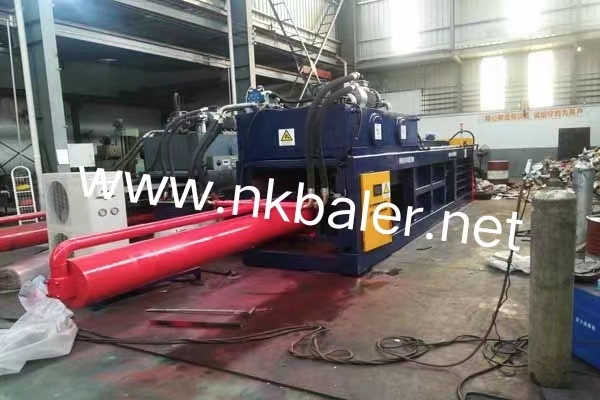The
hydraulic baling press is an important piece of equipment in recycling and manufacturing industries,used to compress and package
waste materials such as
metal scraps,
waste paper,and plastic for easy transportation and reuse.The functionality of a hydraulic baling press relies on its hydraulic system,and the quality of the hydraulic oil directly affects the efficiency and lifespan of the equipment.Therefore,regularly changing the hydraulic oil is a necessary maintenance step to ensure the normal operation of the equipment.Here are the steps for changing the hydraulic oil in a hydraulic baling press:Preparation Familiarize with Structure and Operation Method:It is necessary to familiarize yourself with the structure,performance,and operating method of the hydraulic baling press,and to correctly understand the instruction manual.This step ensures that the operator has a comprehensive understanding of the equipment to avoid mishandling during the oil change process.Check Components:Carefully inspect all components of the
hydraulic baling machine press for any damage or abnormalities.If any issues are found,they should be repaired or replaced promptly to avoid unexpected failures during the oil change.Ensure a Clean Work Area:Ensure the work area is tidy and items are placed at a safe distance from the hydraulic baling press.A clean and organized environment helps improve oil change efficiency and safety.Starting the Oil Change Turn Off Power:For safety reasons,make sure the equipment has completely stopped running and turn off the power before starting the oil change.This is a basic safety measure to prevent accidental startup during the oil change process.Prepare Oil Collection Container:Place a sufficiently large container under the hydraulic baling press to prevent old oil from leaking onto the ground,and prepare new oil and oil change tools.Remove Oil Tank:Locate the oil tank of the hydraulic baling press,which is usually designed on the side or bottom of the machine.Unscrew the tank cap screws,and carefully open the tank cap to avoid oil splashes.Removing Old Oil Extract Old Oil:You can use a pump or manually pour out the old oil from the tank,taking care not to spill it on the environment or skin to avoid pollution or injury.Clean Oil Tank:After emptying the old oil,thoroughly clean the inside walls of the tank using a clean cloth or industrial cleaning agent to remove oil stains and sediment,ensuring the new oil is not contaminated.
Filling with New Oil Refuel:Use a funnel to add new hydraulic oil into the tank through the oil port,ensuring the oil level reaches the specified mark line.The choice of hydraulic oil should meet the specifications and models recommended by the equipment manufacturer.Circulation Test Run:After refueling,start the hydraulic baling press and let it run under low load for a few minutes to fully circulate the new oil in the system while observing the oil level in the tank and whether there are any leaks at the pipeline connections.Check and Adjust Adjust Pressure:After refueling and the initial run,check and adjust the pressure of the hydraulic system to ensure it is within the normal range.Make adjustments according to the equipment manual if necessary.Monitor Operating State:After completing the oil change and adjustments,closely monitor the operating state of the hydraulic baling press for any abnormal sounds,odors,or other issues to confirm the equipment has returned to normal operation.Record and Maintenance Record Oil Change Information:Detailed records of the oil change date,oil specification,amount of oil changed,etc.,are very helpful for future maintenance and care.Regular Checks:Even after completing the oil change,regular inspections and maintenance of the hydraulic baling press should be conducted to ensure the system's cleanliness and good operating condition.

The above steps can effectively complete the oil change work for a
hydraulic baling press.Not only can this maintain the efficient operation of the equipment,but it can also extend the service life of the equipment.It is recommended that users strictly follow the guidance of the equipment manufacturer when performing the above steps and take appropriate safety measures.


